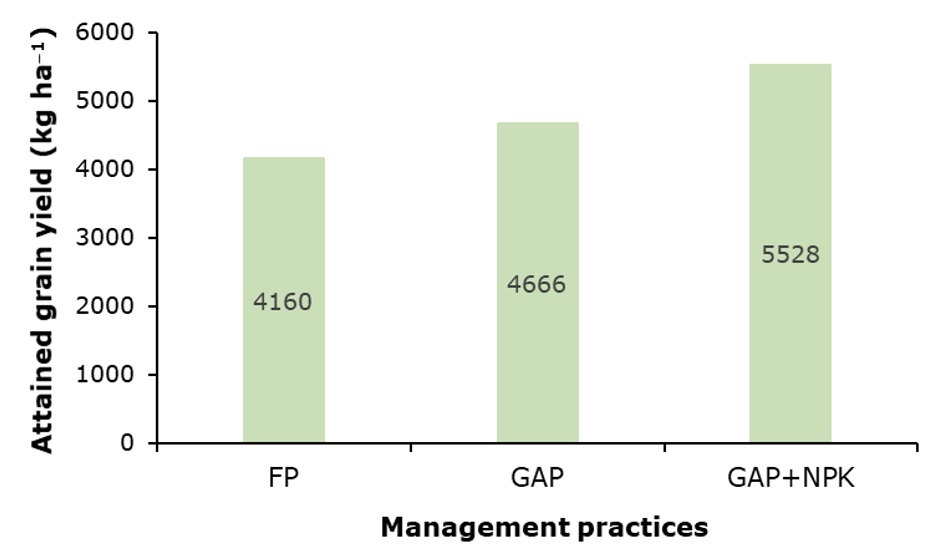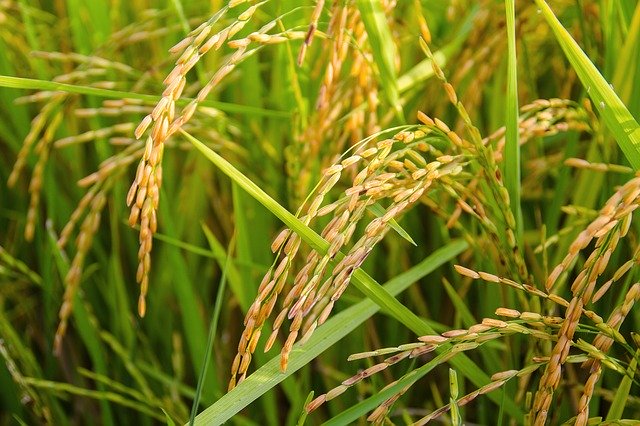Author: Thomas Awio, PhD candidate based at Wageningen University and Research, Wageningen, Netherlands.
Sub-Saharan Africa’s population continues to grow, with the prediction that the population will double by 2050 and peak by 2100. This poses a challenge in meeting the demand for staple food in a region where self-reliance in cereal production, a major staple food, is the lowest globally in terms of productivity. As a result, cereal demand is projected to triple. Yet, cereal yields are very low, and the current consumption is already dependent on substantial imports, placing the continent at a great risk of food insecurity.
To meet the cereal demand of the growing population, there is a need to increase productivity per unit area, thereby closing the gap between actual and potential yields. Many attempts have been put towards improving yield through breeding for high yielding, pest and disease-resistant varieties, and advocating for fertiliser use, though these have not produced the expected results, with average rice grain yield in sub-Saharan Africa only at 2400 kg ha-1.
Why haven’t these efforts paid off?
The reason these efforts have not paid off could be attributed to the use of improved varieties and fertilisers without following good agronomic practices. Good agronomic practices or “good agronomy”, defined as an integrated, coherent set of crop, soil, water, weed, disease, and pest management practices, has been indicated to be crucial to boosting yields alongside fertiliser and improved variety use. Thus, there is a need for farmers to focus on improving agronomy as a whole and not only using improved varieties or adding fertiliser, for them to intensify their production.
| Type of Management practice | + N(PK) Fertilizer | No Fertilizer |
| Good Agronomic Practices | 5528 kg ha-1 | 4666 kg ha-1 |
| Current Farmers’ Practices | 4160 kg ha-1 | 3890 kg ha-1 |
In a recent study, comparing current farmers’ practice (that may not include important management practices like proper weed and pest control) with good agronomic practices with and without the addition of nitrogen (N), phosphorus (P) and potassium (K) fertiliser under irrigated lowland rice conditions, interesting results have been observed. Good agronomic practices without any fertiliser application produced a grain yield of 4666 kg ha-1 compared with 4160 kg ha-1 under current farmers’ practice with fertiliser application. Adding NPK fertiliser in combination with good agronomy resulted in 5528 kg ha-1 grain yield. With only good agronomy and without any fertiliser application, an individual farmer can obtain an additional 591 kg ha-1 rice grain yield on top of the current farmers’ practice yield. Adding fertilisers in addition to good agronomy can give a farmer extra 1103 kg ha-1 grain yield compared to the yield obtained with the current farmers’ practices (Awio et al., 2022). Fertiliser application under current farmers’ practice has limited yield gains compared with application under good agronomic practices.

Image: Grain yield achieved under different management practices on-farm for rice grown under irrigated lowland conditions, where water is not a production challenge. FP = current farmers’ practice; GAP = good agronomic practices without fertiliser application; GAP+NPK = good agronomic practices combined with NPK fertilisation.
In terms of income for farmers, good agronomy without fertilisation is more profitable for farmers where it can result in a mean net income of around USD 220 ha-1. Fertiliser costs make good agronomy combined with NPK fertiliser less profitable, where fertiliser subsidies are non-existent and rice prices are low, resulting to a mean net income of about USD 50 ha-1. Proper timing of weeding is the most important component of good agronomy, and where farmers decide to use fertiliser, timing of fertiliser application also becomes important in order to realise the yield gain. Thus, adhering to good agronomic practices, even without fertiliser addition, can help rice farmers significantly increase grain yield, and income.
Reference
Awio, T.; Senthilkumar, K.; Dimkpa, C.O.; Otim-Nape, G.W.; Struik, P.C.; Stomph, T.J. Yields and Yield Gaps in Lowland Rice Systems and Options to Improve Smallholder Production. Agronomy 2022, 12, 552. https://doi.org/10.3390/agronomy12030552
Image: Tongpradit Charoenphon / Pixabay








